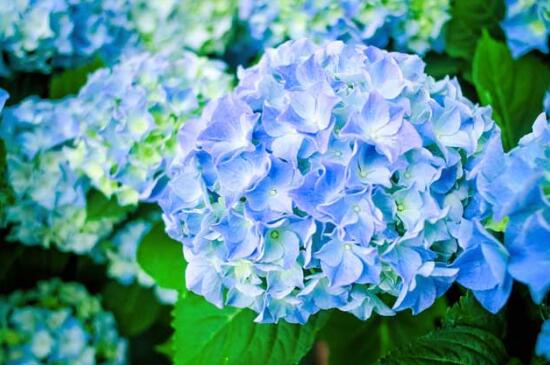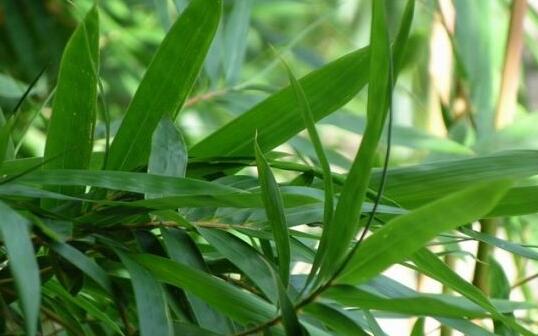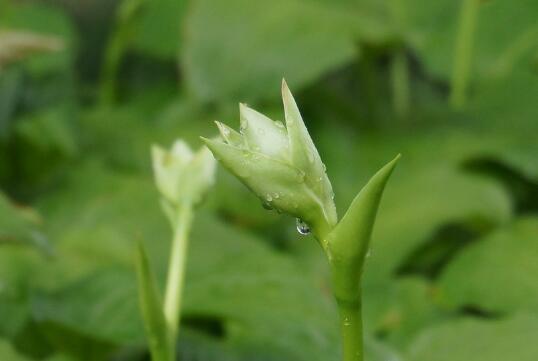How to raise hydrangea, the cultivation methods and precautions / light of potted hydrangea should be less.
Hydrangea, friends who have seen it should be impressed. It is dignified and elegant, with large and beautiful flowers and rich colors, so it is deeply loved by flower friends. In life, many people want to plant hydrangea pots at home, but they don't know how to raise hydrangeas. In this regard, the editor carefully sorted out the hydrangea culture methods and matters needing attention, very comprehensive, friends who want to raise must have a look.
First, how to raise potted hydrangea flowers and understand their habits

About how to raise potted hydrangea, we need to create the best growth environment according to its growth habits. In this regard, the editor will bring you the breeding methods and matters needing attention of hydrangea from the aspects of soil, light, temperature, moisture, fertilization, pruning and so on. Let's move on.
II. Culture methods and matters needing attention of Hydrangea
1. Soil, slightly acidic
How to raise potted hydrangea, first of all, it is natural to choose soil. It is understood that Hydrangea likes the soil with high nutrient content and strong air permeability, so the editor recommends that you choose the culture soil made of 4 rotten leaf soil, 3 garden soil, 2 river sand and 1 cake fertilizer.
Note: hydrangea likes acidic soil, we can't keep it in alkaline soil, otherwise the plant will grow badly and the leaves of hydrangea will turn yellow.
2. No more light.
In the breeding method of hydrangea, we must pay attention to the light, because it likes yin rather than yang, so it can not bask in the sun like other flowers. In spring, move to the outdoor semi-shaded place for maintenance; in summer, the right amount of shade; in autumn, the light is getting weaker, you can put the hydrangea in a bright place; in winter, put it in the sunny place indoors.
Note: in summer, the outdoor light is strong, we should move the hydrangea to a well-ventilated shady place to prevent sunburn in the leaves. In addition, in autumn, hydrangea should be given a little more light, which can promote flower bud differentiation and prepare for flowering.
3. Temperature, 18-28 ℃
According to the warm habit of hydrangea, it is best to keep it in an environment of 18-28 ℃. In addition, hydrangea is not cold-resistant, so pay attention to keep warm in winter and raise the temperature to more than 5 ℃ to prevent it from frostbite.
Note: Hydrangea should be kept at a temperature of 5: 7 ℃ for 6-8 weeks during flower bud differentiation, and then heated to 20 ℃, which can promote flowering. After the hydrangea blossoms, the temperature should be maintained at 16 ℃, which can prolong the flowering period.
4. Watering, watering frequently
How to raise hydrangea, watering is very important. It is understood that Hydrangea likes a wet environment, but it is afraid of waterlogging. So we should often water the hydrangea, but not too much at a time. In spring, water frequently to keep the basin soil moist; in summer, increase the amount of water; in autumn, reduce watering; in winter, reduce watering again.
Note: in addition to watering, in addition to 5-8, because of the dry weather, we also need to spray water on the leaf once. But hydrangea is fleshy root, watering should not be too much, otherwise it is easy to cause the appearance of rotten root of hydrangea.
5. Fertilization, once every 15 days
After watering, let's talk about fertilization, which is also very important in the breeding method of hydrangea. Hydrangea likes fertilizer, during the growing period, thin pancake fertilizer and water should be applied every 15 days or so; in the bud period, 0.5% superphosphate soaking solution should be applied twice to promote the flowers to be large and colorful.
Matters needing attention in the culture of Hydrangea
Although in the above hydrangea breeding methods, there are many points for attention, but if you want to raise hydrangea, there are still many places that flower friends need to pay attention to. To put it simply, there are two points for attention in the breeding of hydrangea:
1. Pruning in time
There is no doubt about the beauty of hydrangea, but if you want it to achieve this effect, you need to prune it properly: pick the heart during the growing period, and in order to promote the growth of side branches, cut it short before the beginning of winter, which is more conducive to the winter.
2. Change the basin
In addition to pruning, we also need to pay attention to the matters needing attention in the breeding of hydrangea. Hydrangea should be changed every 1-2 years in the early spring, into the new culture soil. Remove part of the old soil and rotten roots when changing the basin, and trim it with the change of the basin.
How to raise hydrangea, breeding methods and matters needing attention of hydrangea
How to raise hydrangeas? Hydrangea is shaped like hydrangea, hot and dry, like fat and wet, is a very delicate flower, many people like this kind of flower, hydrangea culture methods and matters needing attention let's find out:
We must first understand the growth habits of hydrangea before we can pertinently master the breeding methods of hydrangea.
Hydrangea is native to the Yangtze River Basin in China and is fond of warm, moist and semi-shady environment. Afraid of drought and waterlogging, it is not cold-resistant. In cold areas, the aboveground parts wither and die in winter, and new shoots will not sprout again until the next spring. Hydrangea likes the light loam which is fat, moist and well drained, and has strong adaptability. The acidity and basicity of the soil had a great influence on the flower color of hydrangea, which was blue in acidic soil and red in alkaline soil.
Culture methods of hydrangea:
1. The suitable temperature for the growth of Hydrangea is 18-28 ℃, and the winter temperature is not lower than 5 ℃. Flower bud differentiation should be maintained under the condition of 5-7 ℃ for 6-8 weeks. 20 ℃ could promote its flowering, and if it could maintain 16 ℃ after flowering, the flowering period could be prolonged.
two。 Hydrangea is a short-day plant, which is treated in the dark for more than 10 hours every day and forms flower buds in about 45-50 days.
3. Potted hydrangea is commonly used in 15-20 cm pots, which are fully watered after sprouting in spring to ensure that the leaves do not wither. June-July is the florescence of hydrangea, fertilizer and water should be adequate, fertilizing once every semimonthly.
4. Usually, the cultivation of hydrangea should avoid the hot sun, and 60-70% shading is the best. When the light is too strong in midsummer, proper shading can prolong the flowering period. Removing the flower stem after flowering can promote the formation of new branches.
5. Hydrangea pot soil should be kept moist, but watering should not be too much, especially in the rainy season to pay attention to drainage to prevent root rot caused by waterlogging. It is better to be a little dry in winter, and the leaves are perishable if they are too wet. Change the basin every spring and trim it properly in order to keep the plant shape beautiful.
6. The main diseases of hydrangea are wilt, powdery mildew and leaf spot. Spray control with 65% Dysen zinc wettable powder 600 times solution. Insect pests are harmful to aphids and bug bugs and can be sprayed with 1500 times of omethoate EC.
Hydrangea culture should pay attention to watering properly, the Beginning of Spring must let hydrangea have rain and dew, sunshine, watering sooner or later.
Hydrangea is easy to grow because of its lovely shape. Therefore, it is favored and farmed by everyone. At present, the cultivation of hydrangea is the trend of the times, so master the methods of hydrangea cultivation as soon as possible.
How to raise hydrangeas? Culture methods and matters needing attention of Hydrangea
Hydrangea, also known as eight Immortals, has large and beautiful flowers, diverse colors and high ornamental value. it is a rare treasure in potted flowers. So, how to raise Hydrangea (eight Immortals)? Next, I would like to introduce the breeding methods and matters needing attention of hydrangea.
Picture: Hydrangea (eight Immortals)
I. Culture methods of Hydrangea
1. Soil
In early spring, move the seedlings of Hydrangea to the pot, and match the flower soil before that.
There are three methods: (1) to mix rotten leaf soil, garden soil, river sand, and cake fertilizer according to the proportion of 4: 3 to 2: 1; (2) to mix manure, sand and cake fertilizer at 4:5:1; and (3) to mix rotten leaf soil, sandy soil (or cinder) and cake fertilizer at 6:3:1.
two。 Fertilization management
Hydrangea likes fertilizer, and cake fertilizer is applied once in about 15 days during the growing period. Topdressing is needed for 1 and 2 times in the budding stage, mainly with calcium superphosphate soaking solution to promote the flower to be big and colorful.
Of course, fertilization also plays an important role in reconciling the soil. Hydrangea likes acidic soil, but the water at home is neutral, and long-term watering will reduce the acidity of the soil, so ferrous sulfate can be properly added to fertilize to turn it into alum fertilizer to irrigate it. Improve the acidity of the soil.
3. Watering management
Hydrangea has thick leaves, large and gorgeous flowers, and needs more water. But the eight immortal flowers are fleshy roots, which cannot accumulate water in the basin and are easy to rot. Take a look at the watering requirements of the eight Immortals in different periods: (1) watering frequently in spring and summer to keep the basin soil moist, especially in the high temperature period in summer, water should be watered once in the morning and evening, paying attention to the appropriate shade at noon; (2) from May to August, in addition to watering, it is also necessary to spray water to the leaves; (3) the weather is getting cooler after September, so it is necessary to reduce the amount of water to promote the branches to be strong and promote dormancy. Winter dormancy reduces watering (if you don't water it) and keeps the basin soil slightly wet.
4. Lighting requirement
Hydrangea prefers yin to yang. When you move outdoors in spring, you should keep the plants in a semi-shade and keep the plants in a well-ventilated shade in the middle of summer to prevent sunburn. After September, the light is getting weaker, so put the plant in a bright place to promote the differentiation of flower buds!
5. Temperature requirement
The most suitable temperature for the growth of hydrangea is 18-28 ℃, and it should not be lower than 5 ℃ in winter. After flower bud differentiation, put it in the environment of 5: 7 ℃ for 6-8 weeks, it can blossom, raise the temperature after flowering, stabilize it at about 16 ℃, and prolong the flowering period. During flowering, the temperature should not be too high, it is easy to make the flowers fade.
Picture: Hydrangea (eight Immortals)
II. Matters needing attention in hydrangea culture
Hydrangea likes acidic soil, can not tolerate barren, in alkaline soil will be poor growth, branches and leaves yellowing. Flower color is also affected by soil acidity and alkalinity.
In the first ten days of October, the plant should be moved to indoor maintenance, proper water control, keep the temperature at 5 ℃, and promote its dormancy. Remove some of the leaves before moving indoors to avoid rotten leaves and infection.
In the growing period, it is usually necessary to hit the top twice to promote branches. After flowering, the old branch is truncated to control the height of the plant. Cut the plant short again before entering winter, which is beneficial to overwintering.
The above is the introduction of hydrangea culture methods and matters needing attention. Hydrangea is a famous ornamental flower. Only after careful maintenance can hydrangea bloom brilliantly.
- Prev

How to apply fertilizer to Phyllostachys pubescens needs to know the choice of fertilizer and the method of fertilization.
When planting Phyllostachys pubescens, fertilization is essential, it can not only provide the nutrients needed for the growth of Phyllostachys pubescens, but also improve its immunity to the virus, but fertilization should not be too little or too much, so how to apply fertilizer? The editor came to tell you the answer.
- Next

When does the hairpin flower bloom and the maintenance of the flowering period / 3 months from July to September
Jade hairpin flower is a unique flower in Asia, generally distributed in China and Japan, this kind of flower has a high ornamental, the color is also very elegant. So when does the Hosta blossom? How to maintain the flowering period of hairpin flowers? Next, the editor will take you to learn about it.
Related
- Fuxing push coffee new agricultural production and marketing class: lack of small-scale processing plants
- Jujube rice field leisure farm deep ploughing Yilan for five years to create a space for organic food and play
- Nongyu Farm-A trial of organic papaya for brave women with advanced technology
- Four points for attention in the prevention and control of diseases and insect pests of edible fungi
- How to add nutrient solution to Edible Fungi
- Is there any good way to control edible fungus mites?
- Open Inoculation Technology of Edible Fungi
- Is there any clever way to use fertilizer for edible fungus in winter?
- What agents are used to kill the pathogens of edible fungi in the mushroom shed?
- Rapid drying of Edible Fungi

